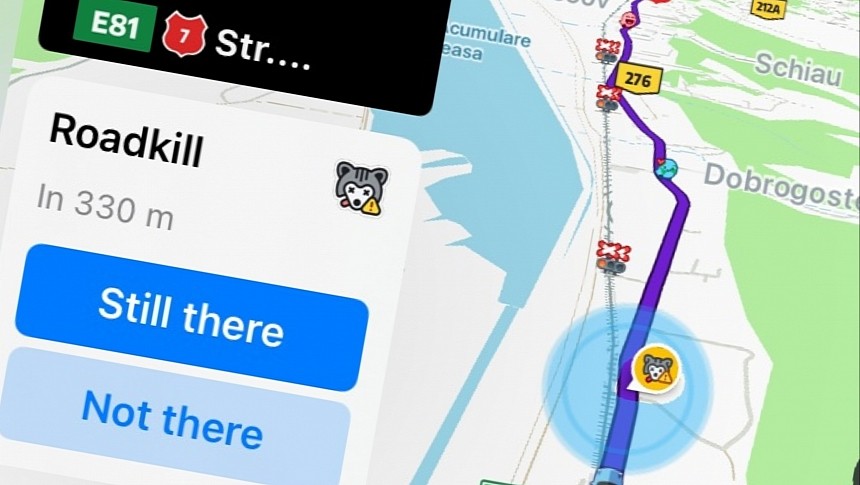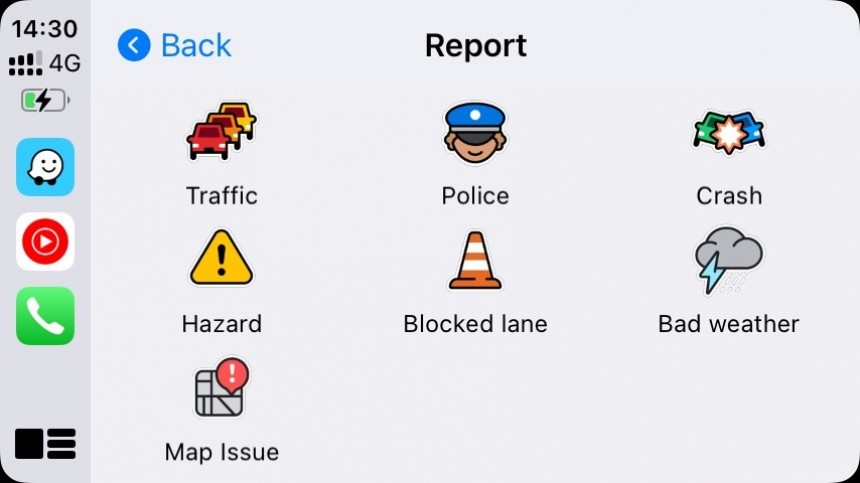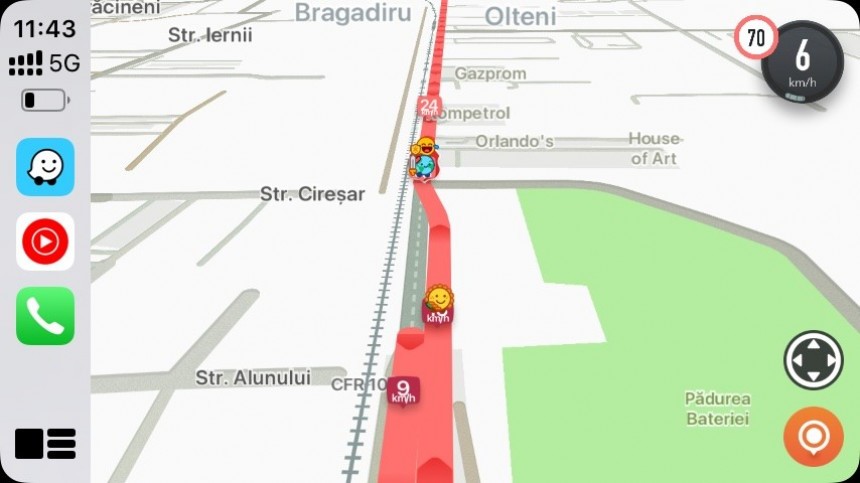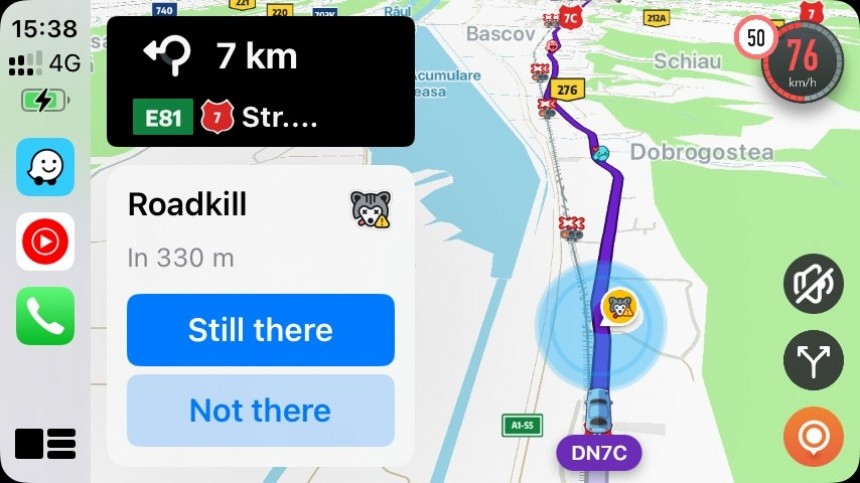I admit it. I'm addicted to Waze, and I can't imagine dealing with the crazy traffic in my hometown without Google's app.
When it works correctly, Waze is a fantastic app. It tells me where I'm likely to encounter heavy traffic and offers routes that get around the points where drivers typically hit slowdowns.
Eventually, Waze helps drivers arrive at their destinations faster, making every second behind the wheel more predictable. It tells us where accidents, traffic jams, potholes, and broken traffic lights are located so you can prepare and slow down in advance.
However, as long-time Waze users know, the experience with the app is a crazy rollercoaster ride. It starts with seamless behavior that makes you fall in love with the app and continues with an experience riddled with bugs that make it impossible to complete a trip without encountering an error.
While I've been using the app for several years, here's the most recent proof that it's easy to love and hate Waze simultaneously.
First, let me highlight the good parts.
In the last few months, I've seen many people criticizing Waze for the plethora of changes made in the app. The Google-owned company has been trying to simplify the reporting experience, with some options going away and returning in a matter of weeks.
Waze has never announced its strategy officially, so users witnessed the changes going live while running the app in their cars.
The new reporting experience is almost complete, and I must admit I'm impressed with how easy it is now to report the most common hazards. Waze has brought the typical traffic reports at a one-tap distance, including police, crashes, bad weather, and blocked lanes. Sending a report on CarPlay is now faster, and considering this experience is aimed at drivers, we all know how important this is from a distraction perspective.
While some updates the app has received lately suggest otherwise, Waze seems to be evolving in the right direction. Many people still believe it's a matter of time until Google kills off Waze and integrates it into Google Maps, my sources told me not long ago that this strategy isn't part of the search giant's short-term strategy. Google wants to keep Waze and Google Maps two separate products, not only because they have different purposes but also to prevent possible regulatory issues.
It doesn't mean Waze is always the best app on the planet.
The application keeps misbehaving in mysterious ways, and one of the most common bugs I've been hitting lately is the vehicle icon missing from the map.
As you can see in the screenshot, Waze no longer displays the car icon, making it impossible for the user to know precisely where they are. It happens in both the navigation and non-navigation interface, though I most often encounter the problem when turn-by-turn guidance is enabled.
I've been struggling with this behavior for months but couldn't find a permanent fix. The only way to restore the missing vehicle icon is to force-close Waze on my iPhone, triggering an app reboot on CarPlay. When Waze starts again on CarPlay, the vehicle icon is displayed correctly. However, the problem returns when I disconnect and relaunch Waze.
Sometimes, the vehicle icon is not missing when Waze already runs on the iPhone before I connect it to the infotainment system to launch CarPlay. However, it's not a guaranteed fix.
This mix of good and bad things makes Waze a necessary evil. We've got to live with it, as no other app offers the same crowdsourcing engine based on such a large community of users. Several companies, including Apple, have tried to copy the concept, but none managed to build an advanced product that can compete with Waze.
Apple Maps includes an incident reporting system, but compared to Waze, it offers more limited options. Apple Maps supports only three types of traffic reports: accidents, speed traps, and other hazards. The adoption of Apple's reporting system is scarce, so drivers relying on the map for a more predictable journey don't come across too many reports.
The number of users sending traffic reports is even smaller in non-US markets. Waze dominates the navigation space in Europe, with Google Maps often serving as the top alternative.
Waze is also projected to receive several notable improvements this year. The Google-owned company has already promised to add speed bump warnings, though the feature doesn't seem to be on the radar yet. I asked around, and Waze seems to prioritize features aimed at new-generation vehicles, including electric cars. However, it's unclear how Google will improve this component, especially as the charging station locations are already available on the map.
Are you a long-time Waze user? What's your favorite feature and the biggest annoyance in the app? Let us know about it in the comment box after the jump.
Eventually, Waze helps drivers arrive at their destinations faster, making every second behind the wheel more predictable. It tells us where accidents, traffic jams, potholes, and broken traffic lights are located so you can prepare and slow down in advance.
However, as long-time Waze users know, the experience with the app is a crazy rollercoaster ride. It starts with seamless behavior that makes you fall in love with the app and continues with an experience riddled with bugs that make it impossible to complete a trip without encountering an error.
While I've been using the app for several years, here's the most recent proof that it's easy to love and hate Waze simultaneously.
First, let me highlight the good parts.
Waze has never announced its strategy officially, so users witnessed the changes going live while running the app in their cars.
The new reporting experience is almost complete, and I must admit I'm impressed with how easy it is now to report the most common hazards. Waze has brought the typical traffic reports at a one-tap distance, including police, crashes, bad weather, and blocked lanes. Sending a report on CarPlay is now faster, and considering this experience is aimed at drivers, we all know how important this is from a distraction perspective.
While some updates the app has received lately suggest otherwise, Waze seems to be evolving in the right direction. Many people still believe it's a matter of time until Google kills off Waze and integrates it into Google Maps, my sources told me not long ago that this strategy isn't part of the search giant's short-term strategy. Google wants to keep Waze and Google Maps two separate products, not only because they have different purposes but also to prevent possible regulatory issues.
The application keeps misbehaving in mysterious ways, and one of the most common bugs I've been hitting lately is the vehicle icon missing from the map.
As you can see in the screenshot, Waze no longer displays the car icon, making it impossible for the user to know precisely where they are. It happens in both the navigation and non-navigation interface, though I most often encounter the problem when turn-by-turn guidance is enabled.
I've been struggling with this behavior for months but couldn't find a permanent fix. The only way to restore the missing vehicle icon is to force-close Waze on my iPhone, triggering an app reboot on CarPlay. When Waze starts again on CarPlay, the vehicle icon is displayed correctly. However, the problem returns when I disconnect and relaunch Waze.
Sometimes, the vehicle icon is not missing when Waze already runs on the iPhone before I connect it to the infotainment system to launch CarPlay. However, it's not a guaranteed fix.
This mix of good and bad things makes Waze a necessary evil. We've got to live with it, as no other app offers the same crowdsourcing engine based on such a large community of users. Several companies, including Apple, have tried to copy the concept, but none managed to build an advanced product that can compete with Waze.
The number of users sending traffic reports is even smaller in non-US markets. Waze dominates the navigation space in Europe, with Google Maps often serving as the top alternative.
Waze is also projected to receive several notable improvements this year. The Google-owned company has already promised to add speed bump warnings, though the feature doesn't seem to be on the radar yet. I asked around, and Waze seems to prioritize features aimed at new-generation vehicles, including electric cars. However, it's unclear how Google will improve this component, especially as the charging station locations are already available on the map.
Are you a long-time Waze user? What's your favorite feature and the biggest annoyance in the app? Let us know about it in the comment box after the jump.









